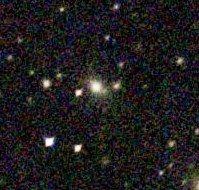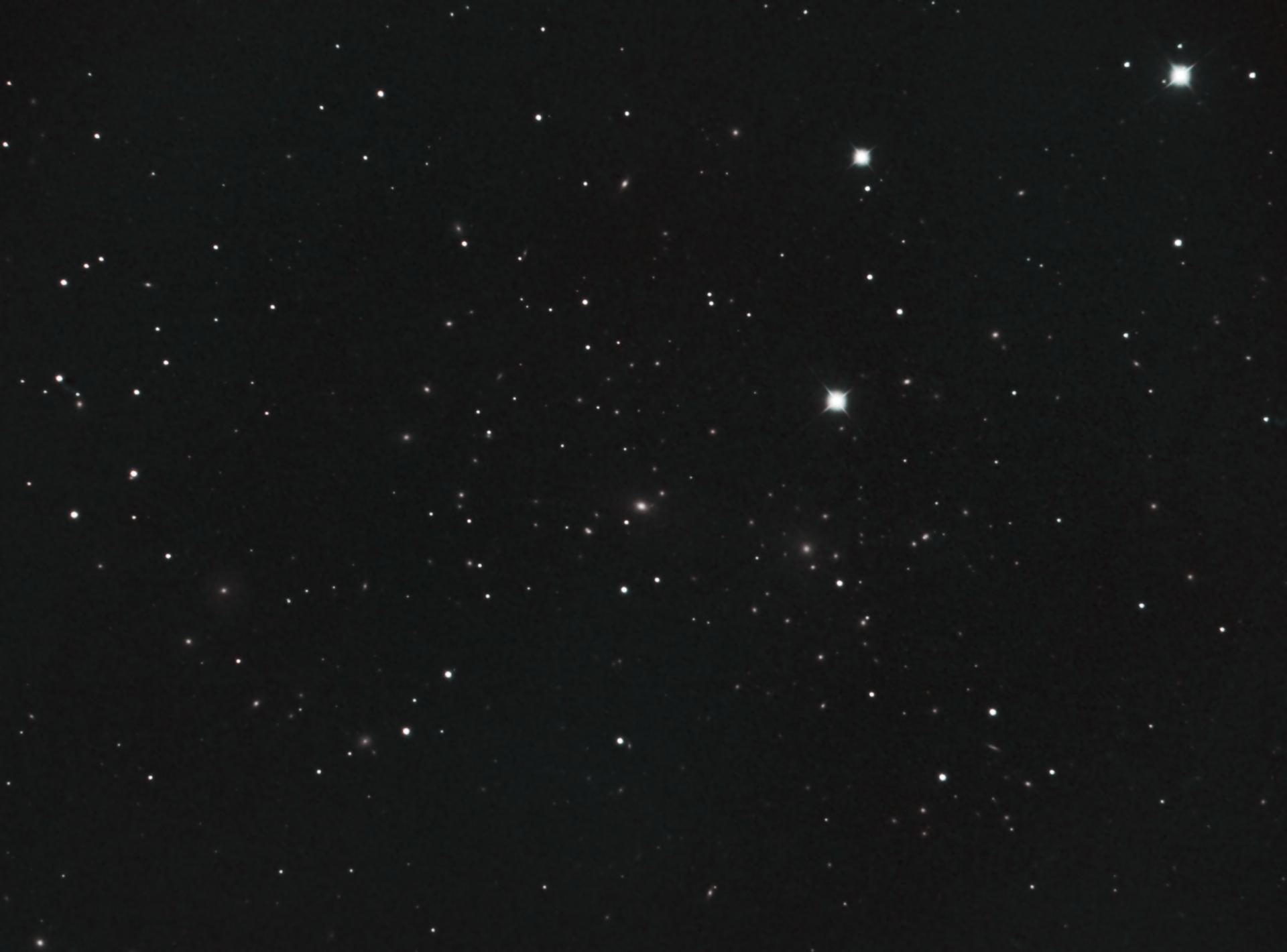C35
NGC 4889 (also known as Coma B) is an E4 supergiant elliptical galaxy. It was discovered in 1785 by the British astronomer Frederick William Herschel I, who catalogued it as a bright, nebulous patch. The brightest galaxy within the northern Coma Cluster, it is located at a median distance of 94 million parsecs (308 million light years) from Earth. At the core of the galaxy is a supermassive black hole that heats the intracluster medium through the action of friction from infalling gases and dust. The gamma ray bursts from the galaxy extend out to several million light years of the cluster.
As with other similar elliptical galaxies, only a fraction of the mass of NGC 4889 is in the form of stars. They have a flattened, unequal distribution that bulges within its edge. Between the stars is a dense interstellar medium full of heavy elements emitted by evolved stars. The diffuse stellar halo extends out to one million light years in diameter. Orbiting the galaxy is a very large population of globular clusters. NGC 4889 is also a strong source of soft X-ray, ultraviolet, and radio frequency radiation.
As the largest and the most massive galaxy easily visible to Earth, NGC 4889 has played an important role in both amateur and professional astronomy, and has become a prototype in studying the dynamical evolution of other supergiant elliptical galaxies in the more distant universe.

